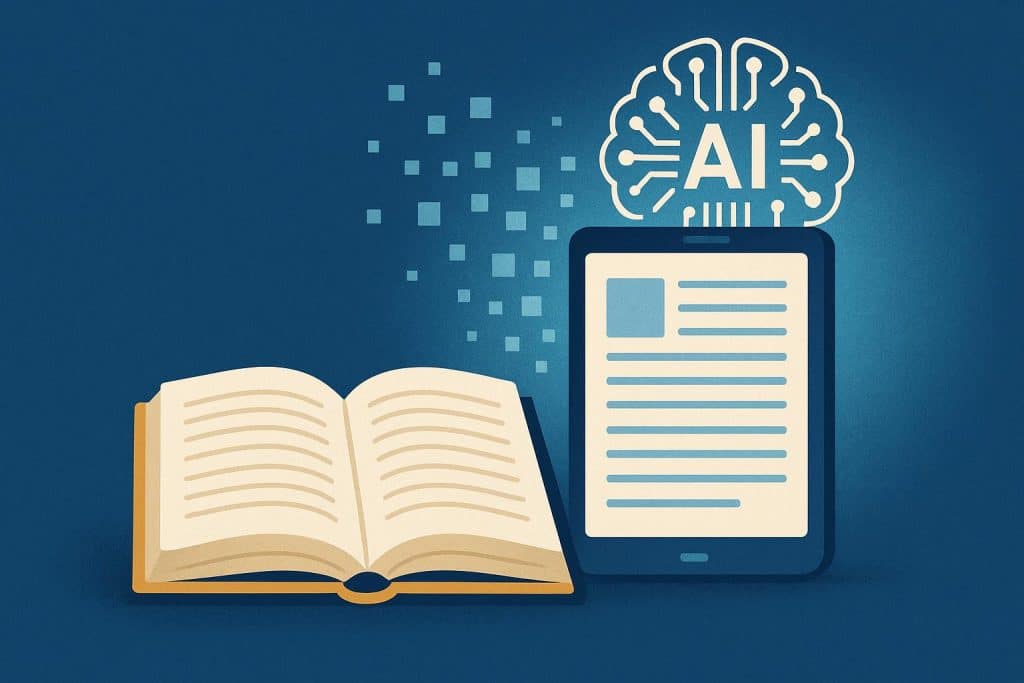From Digitisation to Intelligent Publishing
The earliest phase of digital publishing focused on converting print materials into digital formats. Newspapers, magazines, and books began to appear online in the 1990s and early 2000s, often as exact replicas of their print versions. While this democratized access, it was largely a one-way communication model with little room for personalisation or interactivity.
The next stage was marked by the proliferation of content management systems (CMS) and social media platforms, which have contributed immensely to other fields, such as the highest opening partnership in IPL all season. This has empowered creators to publish content more frequently and at a lower cost. Blogs, e-books, and digital journalism flourished, fueled by the ability to distribute content instantly to a global audience.
AI now marks the third stage of evolution, what some call “intelligent publishing.” Beyond digitisation and distribution, AI systems analyse user behaviour, predict preferences, and even generate content. For publishers, this means the ability to offer hyper-targeted, personalised experiences at scale.
Content Creation in the Age of Algorithms
Perhaps the most visible impact of AI in publishing lies in content creation. Tools powered by natural language processing can draft articles, summarise long reports, and even mimic a writer’s style. In journalism, AI assists with data-driven reporting, such as generating sports recaps, financial summaries, or election results in real time. For marketers, AI enables automated blog posts, product descriptions, and email campaigns that still feel human to readers.
This automation does not necessarily replace human creativity but complements it. Writers can focus on analysis, narrative depth, and investigative work while leaving repetitive tasks to machines. Publishers, meanwhile, can experiment with adaptive storytelling, stories that shift emphasis depending on a reader’s interests or location.
Still, the rise of AI-generated content raises concerns. If algorithms dominate the creation process, questions of authenticity, originality, and intellectual property come into play. Publishers must balance the efficiency gains of AI with the need to maintain trust and editorial integrity.
Personalisation and Reader Experience
AI is also reshaping how audiences interact with digital content. Recommendation engines, like those used by streaming services and online retailers, are increasingly common in publishing. By analysing browsing behaviour, reading history, and engagement patterns, these systems suggest articles, books, or magazines tailored to individual readers.
This personalisation enhances the user experience and fosters loyalty, but it comes with a trade-off: the risk of creating “filter bubbles.” When readers are only exposed to content that aligns with their existing preferences, they may miss diverse perspectives or challenging ideas. Publishers must therefore balance personalisation with editorial responsibility, ensuring that AI recommendations do not compromise the breadth of information available.
Moreover, AI-driven analytics allow publishers to optimise their content strategies. From determining the best time to publish an article to identifying which headlines drive engagement, data insights are shaping editorial decisions more than ever before. In this sense, AI acts as both a compass and a mirror, guiding future content while reflecting the realities of audience behaviour.
Ethical Challenges and the Future of Publishing
As AI becomes more embedded in digital publishing, ethical challenges intensify. Who owns the copyright to AI-generated works: the programmer, the publisher, or the AI tool itself? How can publishers ensure transparency when readers may not know whether content was created by a human or a machine? And perhaps most critically, what safeguards are in place to prevent misinformation, bias, or manipulation in AI-generated outputs?
Addressing these questions requires more than technical fixes; it demands new frameworks for accountability. Publishers and platforms must commit to clear labelling of AI-generated content, establish guidelines for responsible use, and engage in open dialogue with readers about the role of technology in shaping narratives.
Looking ahead, AI may also open new frontiers for digital publishing. Imagine interactive e-books that adjust their complexity based on a reader’s comprehension, or news apps that provide context-sensitive summaries tailored to different levels of expertise. Virtual and augmented reality, powered by AI, could bring immersive storytelling experiences that blur the lines between publishing and entertainment.
Yet, amid all these innovations, the essence of publishing remains the same: connecting ideas with audiences. AI may change the tools, but the fundamental mission, informing, educating, and inspiring, remains deeply human.
Conclusion
The evolution of digital publishing in the age of AI represents both a revolution and a balancing act. AI enables unprecedented efficiency, personalisation, and creativity, yet it also challenges notions of authorship, authenticity, and ethics. For publishers, the future lies not in choosing between human and machine but in integrating both to create richer, more meaningful experiences.
